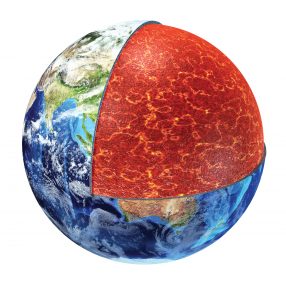Newly Discovered Layer of Earth
December 12, 2023

Scientists at the Jackson School of Geosciences have discovered a layer of partly molten rock under Earth’s crust that might help settle a long-standing debate about how tectonic plates move.
Researchers had previously identified patches of melt at a similar depth. But a new study published in Nature Geoscience has revealed for the first time the layer’s global extent and its part in plate tectonics.
The molten layer is about 100 miles from the surface and is part of the asthenosphere, which sits under Earth’s tectonic plates in the upper mantle. The asthenosphere is important for plate tectonics because it forms a relatively soft boundary that lets tectonic plates move through the mantle. The reasons it is soft, however, are not well understood. Scientists previously thought that molten rocks might be a factor. But this study shows that melt, in fact, does not appear to notably influence the flow of mantle rocks.
“When we think about something melting, we intuitively think that the melt must play a big role in the material’s viscosity,” said postdoctoral fellow Junlin Hua, who led the research. “But what we found is that even where the melt fraction is quite high, its effect on mantle flow is very minor.”
The idea to look for a hidden layer in Earth’s interior came to Hua while he was studying seismic images of the mantle beneath Turkey during his doctoral research at Brown University. Intrigued by signs of partly molten rock under the crust, Hua compiled similar images from other seismic stations until he had a global map of the asthenosphere. What he and others had taken to be an anomaly was commonplace around the world, appearing on seismic readings wherever the asthenosphere was hottest. The next surprise came when he compared his melt map with seismic measurements of tectonic movement and found no correlation, despite the molten layer covering almost half of Earth.
The research was funded by the National Science Foundation. Collaborating institutions included the UT Oden Institute for Computational Engineering and Sciences and Cornell University.
Back to the Newsletter